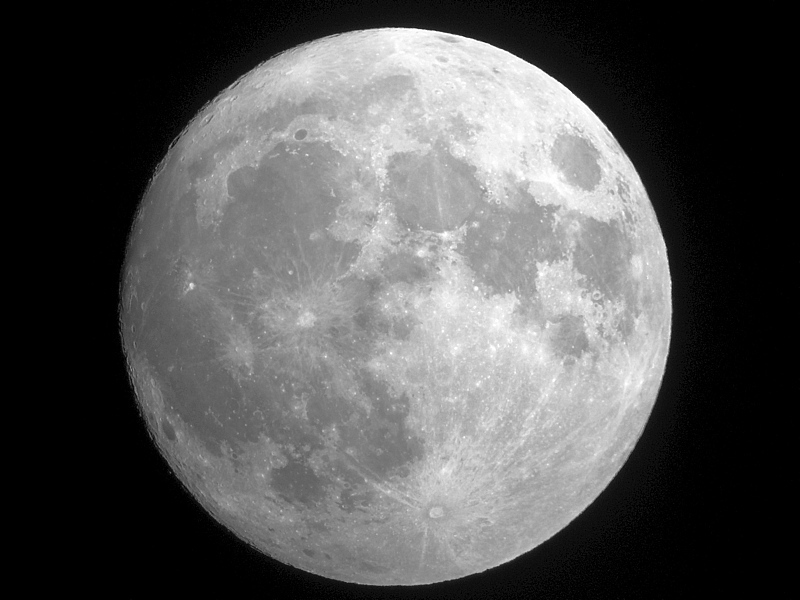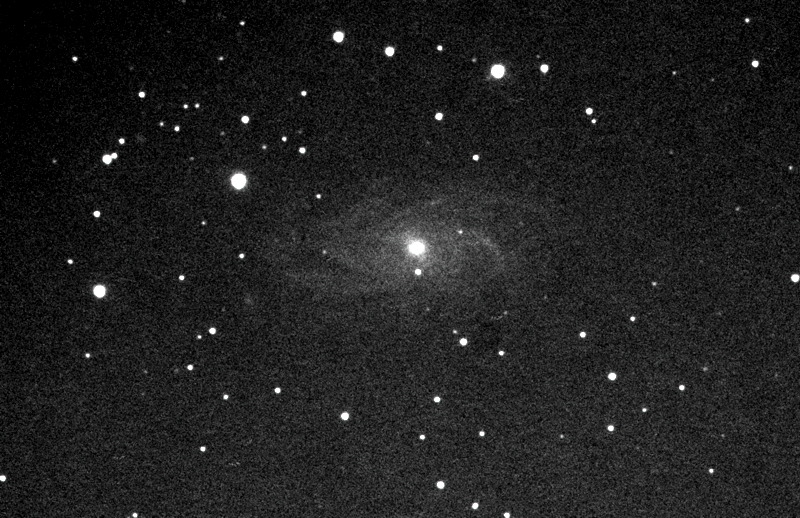
Nearly Full Moon, NGC2336 Galaxy,
Lunar Crater Pythagoras, Sirius B
Posted: 14 February 2014
On my previous report, I showed a possible "fix" applied to my Meade Piggyback Camera Adapter to prevent slippage when the DSLR was used with a long lens at some telescope orientations. That modification did not work. So I tried another one. I searched through a box of old unused odds-n-ends and found some small triangular stick-on rubber feet. Two fit perfectly on the adapter:

Maybe this one will work better. Initial tests demonstrated that the rubber feet held the camera base more securely than the previous "fix" using a cloth velcro piece.
|
Opened: Thursday, 13 February 2014, 1913 MST Temperature: 67°F |
Session: 654 Conditions: Mostly clear with some clouds NW-N |
1919 MST: viewed M82 galaxy, 83X. Supernova SN2014j was still visible although it seemed slightly fainter than recent observations. Then viewed Jupiter, 83X. Four moons were visible and the Great Red Spot was just rotating into view at the limb.
1923 MST: viewed the waxing gibbous moon about 21 hours before full, 83X. Very bright. Took this iPhone 5s afocal 83X photo (handheld) of the moon:

I then began setting up to try piggyback imaging with the D7000 DSLR and 70-300mm lens using the "fixed" piggyback adapter. I tried several times to get a good image, but the rubber feet still did not prevent a very slight slippage and subsequent image trailing even with the mounting bolt as tight as possible. Oh well. Will try to image M82 and the supernova with the DSLR and 300mm lens using the LXD55 mount (which I have used for 8mm fisheye sky photography) once the moon is not a factor.
Next, I set up for imaging of the circumpolar galaxy NGC2336. Mounted the D7000 DSLR at the 8" prime focus using the off-axis guider. Did a focus test on the star Pollux using the Bahtinov Mask. Enabled "High Precision" on the AutoStar, selected NGC2336, and centered the alignment star in the camera viewfinder. Found a faint guide star but didn't use it since I planned to do short exposures this night due to the bright moonlit sky. At 2016 MST, did a 1 minute, unguided, ISO 6400 exposure as a framing test. Then did five unguided 2 minute, ISO 6400, exposures. This is one of the full-frame images which shows NGC2336 and another galaxy (IC467):

Mouseover or tap to see labels
Although bright moon light brightened the sky background, both galaxies are easily seen in the image. Reflections from the bright moon are visible at the left.
I stacked the five 2 minute exposures using Lynkeos for this 10 minute effective exposure image of NGC2336, showing the spiral arms:

Completed DSO imaging at 2031 MST.
2043 MST: did some lunar terminator observing, 222X. The twin peaks in the crater Pythagoras were clearly visible. Took this handheld iPhone 5s afocal 222X image (cropped from the full-frame image) showing Pythagoras:

2057 MST: slewed to Sirius and began trying to observe Sirius B (the "Pup" star) using 222X. Finally at 2107 MST, I was successful at observing Sirius B. I used a piece of paper placed into the eyepiece field-of-view to act as an "occulting disk" to block Sirius A. By positioning the edge of the paper properly I could repeatedly see the Pup star. It was still a challenge however.
|
Closed: Thursday, 13 February 2014, 2126 MST Temperature: 58°F |
|
Comments are welcome using Email. If you are on Twitter you can use the button below to tweet this report to your followers. Thanks.
Cassiopeia Observatory Home Page